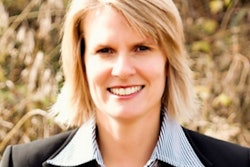
Transgender and gender-nonconforming patients often feel welcome, or at least neutral, when visiting the dental office, according to new study findings in the Journal of the American Dental Association. The same isn't always true when they receive care in other medical settings.
Researchers from Cincinnati Children's Hospital asked transgender and gender-nonconforming (TGNC) youth about their experiences in oral healthcare settings. Their biggest reported burden to care wasn't acceptance but insurance, the researchers found.
"Although attending regular dental appointments did not prove to be an issue for most TGNC participants, problems related to insurance emerged as a major issue," wrote the authors, led by David W. Macdonald, DDS, a pediatric dental resident at the hospital's division of pediatric dentistry and orthodontics (JADA, September 2019, Vol. 150:9, pp. 748-754).
Previous research has established that transgender and other LGBT individuals often face negative experiences in medical settings, including verbal harassment and being refused treatment. However, the same type of research isn't available for dental settings.
The researchers interviewed 20 transgender or gender-nonconforming adolescents receiving care at the Cincinnati Children's Hospital transgender health clinic about their oral healthcare experiences. Sixteen parents or caregivers also participated in the study.
The majority of participants visited the dentist twice per year and had either neutral or positive experiences with dental teams. Of those who switched dental providers, none did so because of experiences related to their identity or coming out.
“I am always thrilled when I walk into a place ... and see an LGBTQ flag of any kind.”
"I feel safe," one patient told researchers. "[I] never needed care that I could not receive."
Multiple participants reported issues with insurance. Some patients experienced claims issues related to their legal versus chosen names. Others described changing names and gender identity for insurance can be onerous and often requires documentation that can be difficult to obtain.
Negative experiences with the staff were rare. Of participants who did have uncomfortable experiences, several said dental team members used the wrong pronouns, did not use their chosen name, or used inappropriate pet names, such as "dude" or "darling." Others felt anxious discussing sensitive topics in an open dental environment.
When patients mentioned these concerns, team members quickly addressed the issues. Parents and caregivers also often told dental staff about a patient's transition ahead of the appointment, which seemed to ease the experience.
"When caregivers were present, many relayed important details about first informing oral healthcare providers about the patients' ongoing transition, their reaction, and obstacles related to insurance," the authors wrote. "Therefore, the positive responses or environment that patients experienced may not have been true when the caregivers first disclosed information about the patients' TGNC identity."
While dental offices seem to be neutral or welcoming spaces for transgender and gender-nonconforming individuals, the authors listed a few things dental staff can do to make offices even more inviting.
First, dental staff can display a rainbow pride flag or pink, blue, and white transgender pride flag to indicate the office is a safe space.
"I am always thrilled when I walk into a place ... and see an LGBTQ flag of any kind," one caregiver said. "That makes me happy because I know that's a safe place for my child."
Offices can also update intake forms with separate boxes for "Sex at Birth" and "Gender Identity" as well as "Legal Name" and "Chosen Name." In addition, they can connect patients and families to other local resources.
"Although TGNC adolescents and young adults may not need oral healthcare specific to their identity, taking steps to provide a safe and comfortable treatment setting can improve [the] patient experience for this vulnerable population," the authors wrote.



















